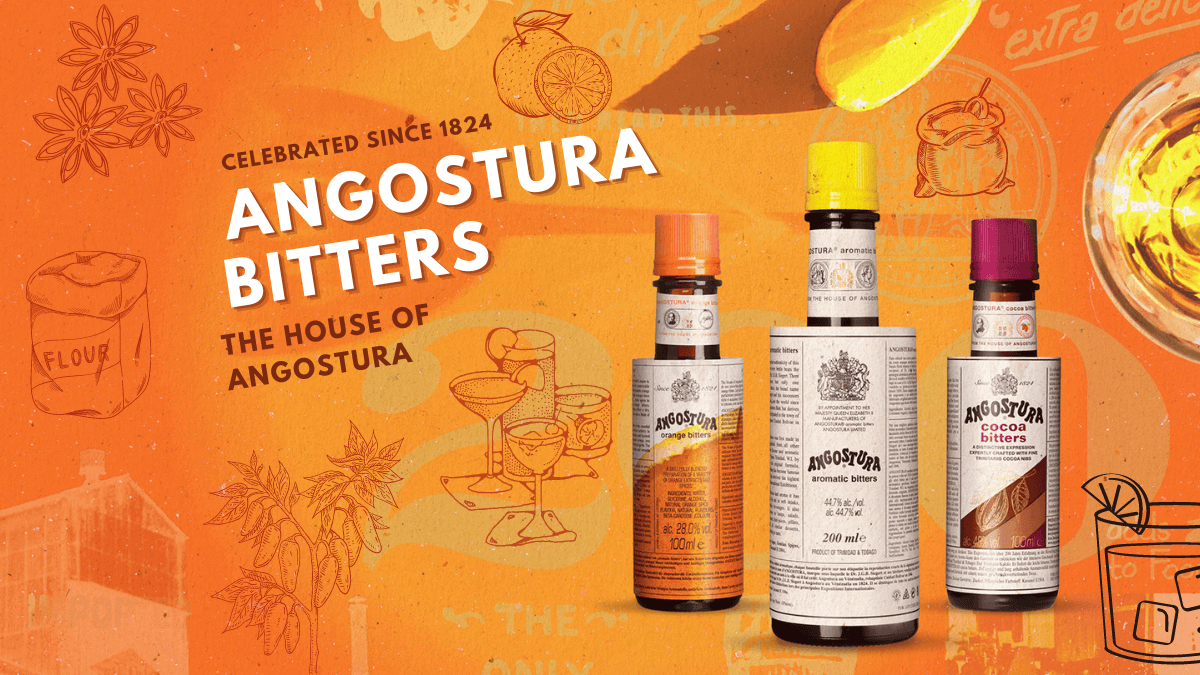23/07/2024

This iconic slim bottle with an oversized white label is as essential as the shaker in cocktail bars around the world.
To truly understand the spirit of a distillery, you need to know its journey, so we begin our deep dive with a quick look at the history of Trinidad and the rum and sugar industry.
Off the coast of South America, the island of Trinidad is only nine miles from Venezuela at its closest points. Christopher Columbus was the first European explorer to cross the island during his journey to the Third World.

In 1588, the Spanish took control of the island, pushing aside the native Caribs and settling the island of Trinidad. The first sugarcane plantation was established in 1787, and by 1795 there were already 159 sugarcane plantations spread across Trinidad. The island also attracted the attention of the British, and Trinidad officially became a British colony in 1802, when Spain ceded it as part of the Treaty of Amiens. In 1889, the British Crown united Trinidad and the nearby island of Tobago into a single colony. In 1962, Trinidad and Tobago gained its independence.
As a British colony for more than 160 years, Trinidad's colonial rum history followed a similar path as Jamaica and Barbados.

Sugarcane plantations were established on agriculturally suitable land, each plantation had a small sugar factory, which was almost always accompanied by a small rum distillery. Rum was a secondary product, sold for a small profit or given to slaves working on plantations.
The XX. In the 19th century, Trinidad's rum history dates back to 3 main rum distilleries:
They all intersected at different points before consolidation and harsh economic realities left only one rum producer: Angostura.
The famous distillery is located a few miles southwest of Queens Park Savannah, the community center of Port of Spain. Currently, they can produce about 8.5 million liters of pure alcohol here every year. Angostura's rum-making technique should be mapped in a colonial style, it would be much closer to the traditions of the Spanish heritage, i.e. shorter fermentation, column distillation, and distillation of light and heavy rums for later mixing.

Trinidad once had a thriving sugar industry that also supplied all the rum distilleries in the country with their molasses needs. The country's last operating sugar factory was closed in 2007, so Angostura also had to look elsewhere for molasses to continue distilling. Its main suppliers come from the Dominican Republic and the Fiji Islands. The distillery has huge molasses storage tanks with 10,000 tons of molasses in reserve.

The fermentation of Angostura begins with the multiplication of yeast cells to create the thousands of liters of yeast required for fermentation.
The next step is to dilute the molasses with water to achieve the correct brix, i.e. sugar content. The propagated yeast is then added.
There are a total of 14 closed fermentation tanks, but currently 12 are in use, each with a capacity of 150,000 liters. The temperature of the tanks is regulated, the temperature must always be around 33 degrees C.

Fermentation takes about 48 hours. Since Angostura makes both light and heavy rums, it is stretched a bit longer when making heavy rums, allowing additional flavors to develop.
Angostura's original column, dating back to 1947, was a Savalle column that was enlarged long ago as the distillery grew. There are currently 3 multi-column, rectangular, multi-storey open-air distilleries.

At Angostura, for the distillation of heavy rum, only the first column of the multi-column stills is used, colloquially known as beer on stripping column. The rum flowing out of the beer column is about 80%. For the distillation of light rum, all the columns are used, so it is 95%.
Angostura matures the majority of its rum in ex-bourbon barrels. Some of the barrels come from Jack Daniels in Tennessee. There are about 75,000 barrels in the various warehouses, which are stacked vertically on pallets in Angostura's warehouses.

About 75% of light rum goes into barrels and is rarely aged for more than two years. In contrast, heavy rum is between 55 and 65% and is aged for a longer period of time.
Angostura's blending operation is overseen by Carol Homer Caesar. The Angostura house makes two types of caramel. One type sets the color of Angostura's rums, the other type is for Angostura bitters. Caramel for rum is made with white sugar, while caramel for bitters starts with brown sugar.
Technically, Angostura Bitters is an alcohol-based infusion. That is, alcohol infused with botanical ingredients. The botanicals may include elements such as orange peel, quinine, cinnamon, but the exact recipe is a closely guarded secret known only to a few company employees.

The museum begins with the Barcant butterfly collection. Look closely at the Angostura rum bottle and you will see a butterfly, the company's symbol. The tour passes through several rooms filled with artifacts from Angostura's nearly two centuries of history.
The most iconic of Angostura's early rums was Siegert's Bouquet. They also made a "pink rum" similar to pink gin. There is a bottle on display in the museum.

Angostura Reserva: mostly light rum with a little medium rum. Aged for 3 years in ex-bourbon barrels, then filtered twice with charcoal, 40%
Angostura 5 years: light rum, matured for 5 years 40%
Angostura 7 Years: A blend of light medium and heavy rums, each aged for at least 7 years before blending. The resulting mixture is then aged for another 2 years 40%
Angostura 1919: a blend of 5 different rums aged between 5 and 14 years.
Angostura 1824: a mixture of medium and heavy rums, aged for at least 12 years. Light rums are carried at 70-75% and heavy rums at 60-65%. The name celebrates the founding of the Angostura house in 1824
Angostura 1787: a blend of rums aged for at least 15 years. The name celebrates the establishment of the first sugar factory in Trinidad in 1787

Author: VCL Team
23/07/2024